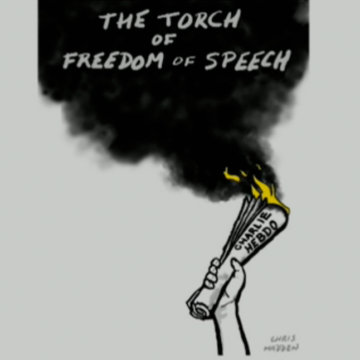- About
- Topics
- Picks
- Audio
- Story
- In-Depth
- Opinion
- News
- Donate
- Signup for our newsletterOur Editors' Best Picks.Send
Read, Debate: Engage.
Yesterday 12 people - the editor, cartoonists and other staff of the satirical weekly Charlie Hebdo, along with two policemen - were brutally murdered by terrorists. Charlie Hebdo's earlier published islam-critic cartoons as well as recordings of "Allahu Akbar" during the carnage, the attack was supposedly conducted by Islamic extremists.
Earlier Charlie Hebdo was targeted by a fire attack after co-publishing cartoons of the prophet Mohammed released by Danish newspaper Jyllands-Posten. In an interview thereafter the editor-in-chief Stéphane Charbonnier said that a minority of fascists is hijacking an entire religion, adding later: "I prefer to die standing than live on my knees!"
On the day of the deadly attack Charlie Hebdo published a cartoon of Michel Houellebecq, whose book "La Soumission" (submission) - a dystopian novel where a sort of Muslim brotherhood takes over the French government in 2022 - was released recently.
Houellebecq describes an anxious society that sacrifices its freedom for its fears. However, yesterday the tremendous wave of solidarity and demonstrations for unity in France indicate prudence instead of polarization. Because polarization and radicalization between people and religions communities would only serve the extremists' goal. Defending the open, democratic society and freedom of speech, protesters in Paris held up a banner saying: "Not Afraid!"
In solidarity with Charlie Hebdo and underlining the freedom of speech French-German TV Channel Arte published on its website a short film on perspectives of cartoonists from various countries. Connected to that a world map illustrates how freedom of speech is being represented through cartoons.
Image: "Torch of Freedom of Speech" by Chris Madden
